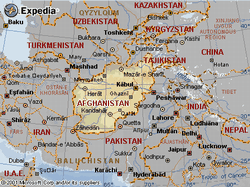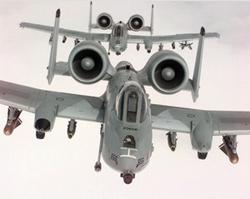US Has No Comment On Rahim Wardak's Shopping List
By ANN Senior Correspondent Kevin "Hognose" O'Brien
 Afghanistan once had a powerful air
force with fighter planes, attack helicopters and transport
machines. Indeed, I saw evidence of it everywhere I went in that
country: hangars shredded by AC-130 fire, fighters left derelict,
jet pilots working as privates in the Army. Between the civil war,
the end of Russian aid (all military types were of Soviet origin),
and the Coalition blitzkrieg of 2001, nothing was left but
souvenirs.
Afghanistan once had a powerful air
force with fighter planes, attack helicopters and transport
machines. Indeed, I saw evidence of it everywhere I went in that
country: hangars shredded by AC-130 fire, fighters left derelict,
jet pilots working as privates in the Army. Between the civil war,
the end of Russian aid (all military types were of Soviet origin),
and the Coalition blitzkrieg of 2001, nothing was left but
souvenirs.
If the new Afghan Minister of Defense, Rahim Wardak, has his
way, Afghan pilots will be taking to the skies again, soon. First,
perhaps, in Afghan machines that were impounded in neighboring
countries during the war -- Wardak asked for their return two weeks
ago, and all the bordering nations are expected to cooperate to
some degree -- and then, in new American types.
Specifically, Wardak wants the two machines that have proven
themselves against the holdout Taliban and renegade warlords that
still bedevil his country, the A-10 Warthog, and the AH-64 Apache
gunship. The AH-64 has been widely exported, but the A-10, which
came of age during the Carter administration's attempts to rein in
arms exports, has not been.

From Wardak's point of view it would be good for the USA as well
as for his own country: "We think if we take more of the burden of
security it will be much more economical -- in terms of money and
human life -- for the coalition and NATO," he told the Associated
Press.
Wardak also wants transport planes, and armored vehicles; and he
has asked the Coalition to step up training of specialty units:
commandos, engineers and intelligence troops. He's quite satisfied
with the training of regular Army units, which is well ahead of
schedule.
The two aircraft that Wardak has requested by name are the two
types that have been most effective in fighting the mountain
guerillas. The A-10 was developed in the 1970s as a tank-buster for
the European theater; it fulfilled its destiny in the first Gulf
war, where every third sortie yielded a destroyed enemy vehicle, on
average. Air Force brass runs hot and cold on the decidedly
subsonic (380 kt flat out) A-10, but ground troops swear by them.
Over 700 were made, and about 300 remain in service today; the
airplanes were built so long ago that many repair parts are
hand-crafted in Air Force shops at Hill AFB, Utah. It is armed with
a tank-killing cannon and 11 hard points that will accept almost
anything in the US or NATO inventory.
 The AH-64 Apache is the nearest
thing to a rotary-winged equivalent of the A-10. While its combat
record has been mixed, with a large number shot up (and shot down)
in the most intense phases of war in Afghanistan and Iraq, it has a
very good record for keeping its crew alive to fight again. It is
armed with a smaller, but deadly accurate, automatic cannon and has
stations on its stub wings for a variety of rockets and
missiles.
The AH-64 Apache is the nearest
thing to a rotary-winged equivalent of the A-10. While its combat
record has been mixed, with a large number shot up (and shot down)
in the most intense phases of war in Afghanistan and Iraq, it has a
very good record for keeping its crew alive to fight again. It is
armed with a smaller, but deadly accurate, automatic cannon and has
stations on its stub wings for a variety of rockets and
missiles.
These sophisticated combat planes are currently called up and
controlled by the American or Coalition trainers embedded with
Afghan units. To make proper use of them, Afghanistan needs more
than just planes. It needs an entire infrastructure of command,
maintenance, and communications. It needs a counterpart of the US
Air Force Combat Control Teams or Enlisted Terminal Air
Controllers, which is a capability that even the USA only evolved
relatively recently.
There has been no official response from the USA to Minister
Wardak's request. Wardak, however, expressed confidence that the
request would be answered positively.
 Airborne-Flight Training 05.09.24: ERAU at AIAA, LIFT Diamond Buy, Epic A&P
Airborne-Flight Training 05.09.24: ERAU at AIAA, LIFT Diamond Buy, Epic A&P ANN's Daily Aero-Term (05.07.24): Hazardous Weather Information
ANN's Daily Aero-Term (05.07.24): Hazardous Weather Information Aero-News: Quote of the Day (05.07.24)
Aero-News: Quote of the Day (05.07.24) NTSB Final Report: Cessna 150
NTSB Final Report: Cessna 150 Aero-News: Quote of the Day (05.08.24)
Aero-News: Quote of the Day (05.08.24)





